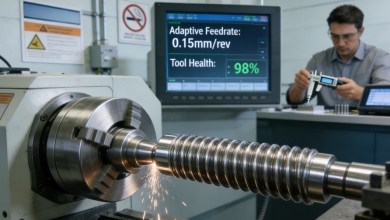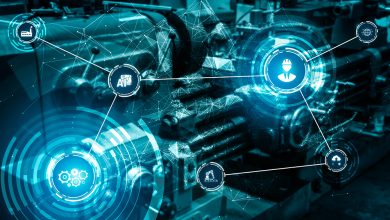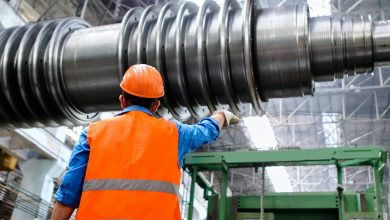
In the realm of construction, block machines are indispensable for generating superior concrete blocks. Innovators like Lontto spearhead the amalgamation of Artificial Intelligence (AI) within these machines, holding the promise to revolutionize the industry by elevating efficiency, refining processes, and guaranteeing top-tier outputs. This comprehensive case study delves into the advantages, implementation procedures, and future trajectories of AI in Block Machine services, elucidating how AI integration can bridge the chasm between real and ideal manufacturing results.
Merits and Engagement of AI
AI-Driven Process Refinement
AI refines the block production continuum by scrutinizing data from various production phases. This encompasses overseeing raw material quality, modulating mixing ratios, and ensuring uniform curing periods. Sophisticated algorithms facilitate real-time alterations to enhance block quality and diminish waste.
Predictive Maintenance
AI can forecast when a machine component is prone to failure by analyzing data from integrated sensors. This predictive prowess permits maintenance prior to a breakdown, curtailing downtime and slashing maintenance expenses.
Quality Assurance
AI bolsters quality assurance by deploying computer vision and machine learning algorithms to inspect blocks for imperfections such as fissures or incorrect dimensions. This automated scrutiny ensures that only premium blocks are dispatched, mitigating the risk of defective products reaching clientele.
Production Efficiency
AI amplifies the efficiency of block machines by optimizing energy consumption. By examining energy usage patterns, AI can propose adjustments that curtail power consumption without compromising block quality, resulting in cost savings and a more eco-friendly production process.
Customization and Adaptability
AI endows greater flexibility and adaptability to fluctuating production requirements. It facilitates swift modifications to machine settings for crafting different types and sizes of blocks based on real-time market demand, enabling firms to react promptly to customer needs and market trends.
Enhancing Worker Safety
AI augments worker safety in block manufacturing facilities. AI-powered surveillance systems identify hazardous conditions, alerting workers or shutting down machines to avert accidents, thus significantly reducing workplace injuries.
Implementing AI in Block Machine Services
Data Collection
Accumulate data from sensors and production stages to lay the groundwork for AI algorithms.
Algorithm Development
Craft AI algorithms tailored to specific production necessities to analyze data and optimize processes.
Integration
Enhance machines with sensors and connectivity to ensure seamless communication between AI systems and machines.
Training and Validation
Educate AI algorithms using historical data and validate their performance to guarantee accuracy in practical conditions.
Continuous Improvement
Perpetually update and refine AI systems based on new data and production outcomes.
AI in the Manufacturing Sphere: A Global Perspective
Technological Trends
Over the last century, global technological evolution has been influenced by trends in electronics, semiconductors, business services, telecommunications, and smart consumer products. As the valuation of “Internet + Consumer” reached its zenith and stabilized, a new trend—”smart enterprise”—emerged. Enterprises are now focusing on intelligent transformations, leveraging digital technology to guide their bespoke solutions.
Manufacturing generates approximately 1,812 petabytes (PB) of data annually, surpassing any other industry. Manufacturers are increasingly harnessing smart technology to process and utilize this data, uncovering patterns and addressing previously unforeseen issues.
Artificial Intelligence in Practice
AI applications in manufacturing can be categorized into intelligent production, products and services, business operations and management, supply chain, and business model decision-making. Smart production is currently the predominant area of AI deployment, with a growing focus on products/services and supply chain management.
Implementation Obstacles
Despite significant AI implementations, numerous projects fail to meet expectations due to challenges such as extant experience, organizational structure, infrastructure constraints, data quality, lack of engineering acumen, and overly intricate scales.
Future Trends
Enterprises are increasingly investing in hybrid technology systems to optimize production, costs, inventory, quality control, sales, pricing, and predictive maintenance. Investments in single-purpose technologies like visual surveillance, robot localization, and expert systems are less favored.
Recommendations for AI Adoption
Align with Strategic Objectives
Ensure AI deployments correspond with company strategies and business goals, whether aimed at generating new revenue, reducing costs, or enhancing operational efficacy. Opt for deployments of suitable complexity to achieve business objectives.
Define Use Cases
Identify scenarios where AI can surpass human capabilities, concentrating on strategic areas for AI application.
Build Data Foundation
Deep learning-based AI heavily relies on big data. A robust data foundation is vital for successful AI projects.
Establish Teams and Partnerships
Develop AI capabilities with a professional team possessing expertise in AI technology, industry knowledge, and AI adoption.
Run POC and Implement at Scale
Design prototypes and run proofs of concept (POC) for AI processes. If viable, iterate and implement at scale.
Conclusion
AI holds the potential to revolutionize block machine services by enhancing efficiency, quality assurance, predictive maintenance, and worker safety. By integrating AI, companies can achieve heightened productivity, reduced costs, and improved product quality, culminating in greater customer satisfaction and competitive advantage. As the manufacturing sector continues to embrace AI, staying abreast of technological trends and addressing implementation challenges will be pivotal in maximizing AI benefits.







